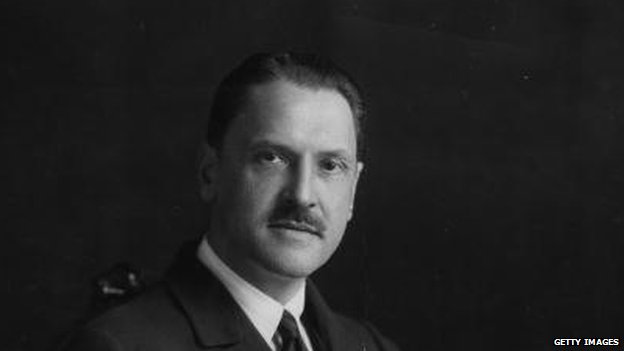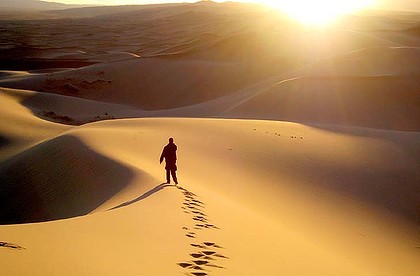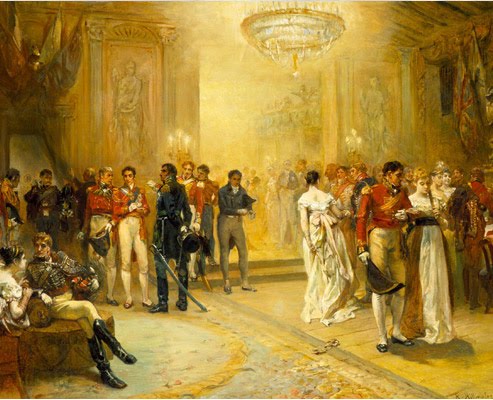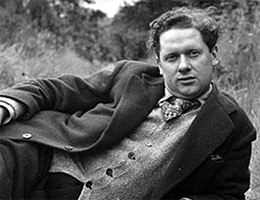This ode by the British poet of Irish descent, Arthur O’Shaughnessy, is one of the oldest forms of poetry and is a celebratory expression of art. “We are the music makers” is the first poem from O’Shaughnessy’s collection called “Music and Moonlight” (1874). Arthur O’Shaughnessy dedicates this poem to the artists- the writers, the poets, the painters, the people who have lived in fantasy and build their own world outside the confined monotony of the real world. It is one of the most uplifting and hopeful poems about art that has been written as a result of which it is often quoted in other works of art. The phrase “movers and shakers” originated in this ode. This poem is made up of three stanzas of eight lines each. The rhyme scheme for the first stanza is ABABABAB, the rhyme scheme for the second stanza is AABBCDCD, and the rhyme scheme for the third stanza is the same as that of the first stanza, i.e., ABABABAB. The predominant tone of the poem is that of appreciation and celebration of art.
The poem starts on a note of pure appraisal of the artists & their dedication to art. The first line delivers its message in a straightforward manner: it is dedicated to the artists and to their timeless creations, to the ‘music makers’ who are the ‘dreamer of dreams’ and it appeals to the artists across different realms spread all over the world. The poet avoids the mention of a particular art form which intensifies its universal appeal. O’Shaughnessy has attempted to reject the concept of Aestheticism, which glorifies the idea that artist’s only relationship is to his art itself, and has presented the artists as the harbinger of creative rebellion in the otherwise dull society. Art, in this poem, has a fluid definition. Art is the force which awakens people’s minds and inspires them to think in a creative manner. According to the poem, being an artist is difficult. Artists live a lonely life, away from the cacophony of the society. They are often misunderstood by everyone and termed as “losers and forsakers”. But one must realize that it is just the inability of the common men to understand and interpret the immortal works of the artists who are beyond their comprehension. The poet highlights the dependency of the artists on a patron or on inheritance of a good fortune to make a living. This has been a common issue amongst the artists since time immemorial. Here, the narrator wants to make it clear to the reader that to be an artist requires tremendous sacrifice and very often that sacrifice is to live externally or in exclusion from the society. It is almost necessary to be isolated from human error and strife to see the beauty in human nature. Aloofness is vital in the creation of art as it gives them the space to utilize their creativity and imagination to produce something praiseworthy.
The artists have an important role to fulfil in this world and that is to be the “movers and shakers.” The use of this term implies rebellion, a rebellion against conventional existence. It is implied as a change in the status quo; especially that of art. Art does not confine itself to social, political, religious or cultural boundaries. Art unites people and inspires imagination. The artists shape public opinion and helps in building a better world consisting of people who would be determined to bring dynamicity in the drab, dull society.
In the second stanza the speaker draws our attention to the contributions of artists to the world. The poet celebrates creation and fantasy and the artist’s ability to give birth to something new. They stay away from worldly pleasure but in the same time, they are able to address issues through their art that pushes the society forward. Artists have the gift of imagination through which they help manifest a new world, built new cities and create a glorified empire out of their stories. They help to arouse radical thoughts, feelings and realizations in people’s mind. It further implies that the works of art outlives any other materialistic possessions. Men are bound to die but the art they create lives forever. People draw their strength and inspiration from the work of these artists thus they are creating a better world through their art. Art is a salvation in itself and has been the man’s greatest achievement yet.
The poet alludes to the ancient Biblical cities of Nineveh and Babel to highlight the ability of artists to create and destroy. The artists belong to all ages and every era comes with a prophecy of a new and better era. He refers to the cities of Babel & Nineveh, fostering the idea of art as a divine creation. The speaker almost equates the artists with some divine figure possessing God-like attribute of creation and destruction. The narrator clearly states the importance of the existence of artists in our society and the beneficiary roles that they play. It is because they have an indomitable spirit and can manifest the most unfathomable things that are beyond our imagination. The narrator further states that the artists are capable of overthrowing the old world with their prophecy of the new world. According to him, the dreams of the artists that shape the world today are replaced by the new dreams of a modern and better era. Hence, the birth of a new dream gives rise to the birth of a new age and a better world. The poet puts the artists in the highest pedestal and renders them to be immortal, thereby reasserting the fact that even though they are “losers and forsakers”, they are ultimately the “movers and shakers” of the world.
You can go through the summary of Ode “We are the Music Makers”.
Some online learning platforms provide certifications, while others are designed to simply grow your skills in your personal and professional life. Including Masterclass and Coursera, here are our recommendations for the best online learning platforms you can sign up for today.
The 7 Best Online Learning Platforms of 2022
- Best Overall: Coursera
- Best for Niche Topics: Udemy
- Best for Creative Fields: Skillshare
- Best for Celebrity Lessons: MasterClass
- Best for STEM: EdX
- Best for Career Building: Udacity
- Best for Data Learning: Pluralsight

















You can frame some questions and answers